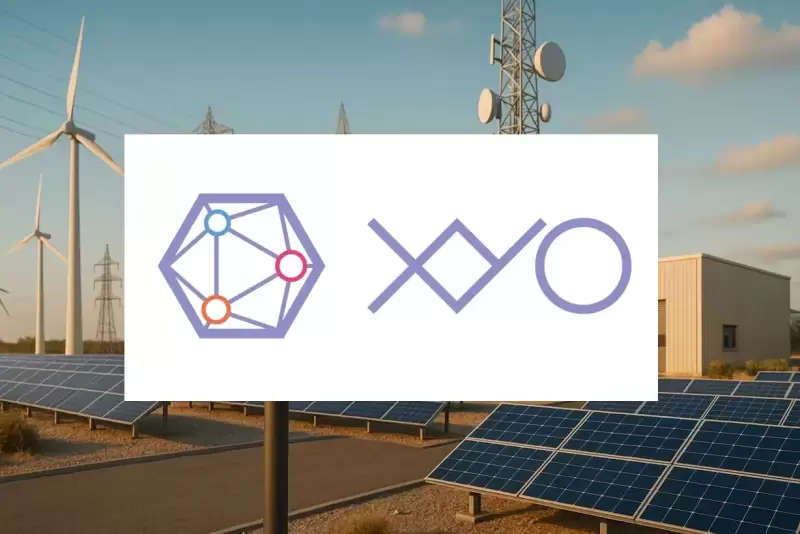 |
|
 |
|
 |
|
 |
|
 |
|
 |
|
 |
|
 |
|
 |
|
 |
|
 |
|
 |
|
 |
|
 |
|
 |
|
If you see what's happening on-chain, it can feel like the end of the world is coming. It can even be said that AI has replaced cryptocurrency

If you've been following crypto trends closely, you might feel like the world is ending. Or maybe AI has taken over as the hotter space. Both statements have some truth, but it's best to look at the problem from a broader perspective.
This article will follow a common thread in innovation cycles as they reach market fit. Today's story will highlight the commonalities between Uber, Pendle, and EigenLayer to help you dispel pessimistic takes on Twitter and gain a new point of view.
For thousands of years, it was said that humans could not fly. Now, 112 years after the first human flight, we've learned how to catch a rocket returning from space. Innovation seems to be unfolding slowly, over vast periods of time.
The real magic of technology isn't in the initial invention, but in the ecosystem that grows around it. Think of it like compound growth, but with innovation instead of money.
While the first movers who create something new grab the headlines and VC funding, it's often the second wave of builders who unlock the greatest value—those who see untapped potential in the existing foundation. They notice possibilities that others don't.
History is full of innovators who never predicted how their inventions would reshape the world. They simply tried to solve the problems at hand. In the process, they opened up possibilities that far exceeded their initial vision.
The best innovations are not destinations, but launch pads for entirely new ecosystems to take off. Today's post will explore how this phenomenon manifests itself in Web3. It starts with the Global Positioning System (GPS) that we use every day, and then traces back to the cryptocurrency space through re-staking and points mechanisms.
A weekend that changed the Internet
The Global Positioning System (GPS) has been pinpointing locations on Earth since its introduction in 1973 by the U.S. military. But Google Maps goes far beyond that, making this raw data accessible, usable, and understandable to billions of people.
Google Maps began with three strategic acquisitions in late 2004.
The first was a small Australian startup named Where 2 Technologies, operating out of a bedroom in Sydney. They developed "Expedition," a C++ desktop application that utilized pre-rendered map tiles for seamless navigation. It offered a superior user experience compared to MapQuest's clunky interface.
Simultaneously, Google acquired Keyhole (satellite imagery technology) and ZipDash (real-time traffic analysis), integrating core components of its mapping vision. Together, these acquisitions formed the foundation of Google Maps: merging interactive navigation, rich visual data, and dynamic information into a single application.
Expedition was a desktop application, but Larry Page, the CEO of Google at the time, insisted on a web-based solution. Initial attempts were slow and uninspired. To resolve this, Bret Taylor, a Stanford graduate and former associate product manager at Google, took it upon himself to fix it.
Bret Taylor completely rewrote the entire front end using Asynchronous JavaScript and XML (AJAX). AJAX was a new technology that allowed websites to update content without reloading the entire page. Before AJAX, web applications were static and clunky. But with AJAX, responsiveness rivaled that of desktop software. Maps became draggable, and new tiles loaded without refreshing the page—a revolutionary user experience in 2005.
The real genius came when Google released its Maps API later that year, transforming it from a product to a platform. Developers could now embed Google Maps and build on top of them, sparking thousands of “mashups” that eventually grew into full businesses. Uber, Airbnb, and DoorDash all exist because Bret Taylor made maps programmable over one fateful weekend.
Bret Taylor's intuition is a recurring phenomenon in technology: the most profound value often comes not from foundations but from what others build on them. These “second-order effects” represent the true magic of innovation—the ability of a single breakthrough to empower an entire ecosystem, spawning unimagined applications.
Once Google Maps became programmable, it set off a chain reaction. Airbnb, DoorDash, Uber, and Zomato were among the first to integrate, placing GPS at the heart of their services. And Pokemon Go went a step further by overlaying augmented reality technology on top of location data, blurring the line between reality and virtuality.
What's behind all this? Of course, it's payments. Because what good is an on-demand service if payments can't be seamless?
The GPS technology they rely on isn't new. But GPS alone doesn't work miracles. It's the culmination of decades of technological evolution, such as satellite positioning, mobile hardware, AJAX, APIs, and payment channels, all of which were quietly taking place.
That's why second-order effects are so powerful. They don't get much attention in the present. But one day you look up and see that your daily routine
Disclaimer:info@kdj.com
The information provided is not trading advice. kdj.com does not assume any responsibility for any investments made based on the information provided in this article. Cryptocurrencies are highly volatile and it is highly recommended that you invest with caution after thorough research!
If you believe that the content used on this website infringes your copyright, please contact us immediately (info@kdj.com) and we will delete it promptly.
-

-

-

-

-

- Introducing MIND of Pepe (MIND): The New AI Presale Token Aiming to Overtake PEPE
- Apr 20, 2025 at 10:25 pm
- The cryptocurrency landscape is heralding the arrival of a new AI presale token – MIND of Pepe (MIND). As the mainstream PEPE meme coin continues enjoying healthy gains of more than 10% this week
-

-

-

-




























































